#actinia equina
Text

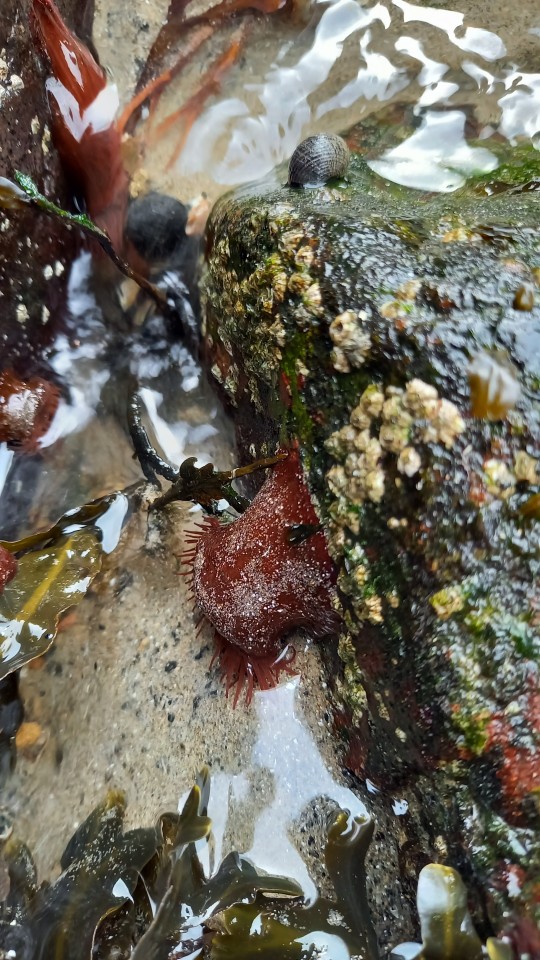
4 notes
·
View notes
Text

Epibiosis - An interesting ecological association as it might have looked 508 millions years ago: a cluster of Micromitra burgessensis, a species of early brachiopod and without doubt one of the prettiest organisms of the Cambrian, attached to the enigmatic tube-building animal Tubulella sp., a possible cnidarian.
In the Burgess Shale, almost a third of M. burgessensis individuals are preserved attached to another organism - often the spiny sponge Pirania, but they weren't too picky, settling on many different biogenic substrates (such as the tube here), and even other individuals of their own species! The strong tendency of Micromitra (and several other brachiopods species) in this deposit to colonize living organisms is most likely due to the rarity of other hard substrates like rocks, and a predominantly soft, soupy seafloor that did not provide suitable attachment points (Topper et al. 2015a).
Speculative hydroid-like polyps are also depicted on the tube, inspired by modern tube worms covered in hydroids that I saw while looking for reference pictures. Despite the exceptional range of soft bodied fossils collected in the Burgess Shale, no cnidarian soft tissues are known from this deposit, as the conditions required for their preservation appear different to those for other animals (Hancy & Antcliffe 2020): one wonders how many soft-bodied epibionts have disappeared without leaving a single trace in the fossil record, despite affecting the life of their hosts and possibly even competing with other, more fossil-friendly epibionts like brachiopods.
(Reconstruction of fossil specimen ROM63170 as figured in Topper et al. 2015b. Additional reconstruction information based on Topper et al. 2015a, 2015b. Maximum shell width of the center brachiopod is approx. 5 mm.)
References:
Hancy, A. D., & Antcliffe, J. B. (2020). Anoxia can increase the rate of decay for cnidarian tissue: Using Actinia equina to understand the early fossil record. Geobiology, 18(2), 167–184. https://doi.org/10.1111/gbi.12370
Topper, T. P., Strotz, L. C., Holmer, L. E., & Caron, J.-B. (2015). Survival on a soft seafloor: Life strategies of brachiopods from the Cambrian Burgess Shale. Earth-Science Reviews, 151, 266–287. https://doi.org/10.1016/j.earscirev.2015.10.015
Topper, T. P., Strotz, L. C., Holmer, L. E., Zhang, Z., Tait, N. N., & Caron, J.-B. (2015). Competition and mimicry: The curious case of chaetae in brachiopods from the middle Cambrian Burgess Shale. BMC Evolutionary Biology, 15(1), 42. https://doi.org/10.1186/s12862-015-0314-4
#micromitra#paterinid#brachiopod#tubulella#cnidarian#epibiont#symbiont#burgess shale#cambrian#paleozoic#paleontology#palaeoblr#paleoart#my art
77 notes
·
View notes
Photo

🍅 El tomate de mar (Actinia equina) tiene este nombre gracias a la forma que asume cuando retrae sus tentáculos. 🔸 Es una especie de anémona, que así como los demás cnidarios, tiene células urticantes en sus tentáculos. 🔸 Son animales solitarios, que gracias a la capacidad de retener agua, se adaptaron a vivir en la zona de intermarea. #tomatedemar #actinia #actiniaequina #anemona #cnidaria #animales #faunamarina #animalesmarinos #snorkeling #snorkel #conservacionanimal #tossademar (at Cala Bona Tossa de Mar) https://www.instagram.com/p/Cg5Vm9oK5th/?igshid=NGJjMDIxMWI=
#tomatedemar#actinia#actiniaequina#anemona#cnidaria#animales#faunamarina#animalesmarinos#snorkeling#snorkel#conservacionanimal#tossademar
9 notes
·
View notes
Text
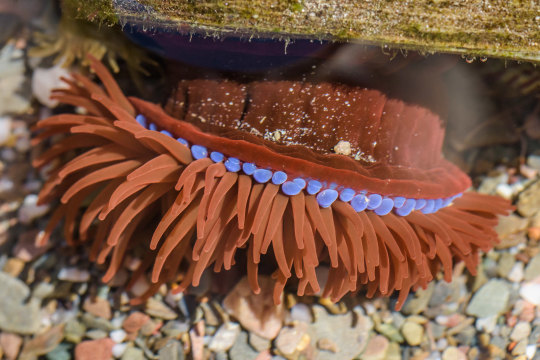
Beadlet anemone (Actinia equina)
Photo by Mike Wynne Powell
#beadlet anemone#sea anemone#actinia equina#actinia#actiniidae#actinioidea#enthemonae#actiniaria#hexacorallia#anthozoa#cnidaria
72 notes
·
View notes
Photo
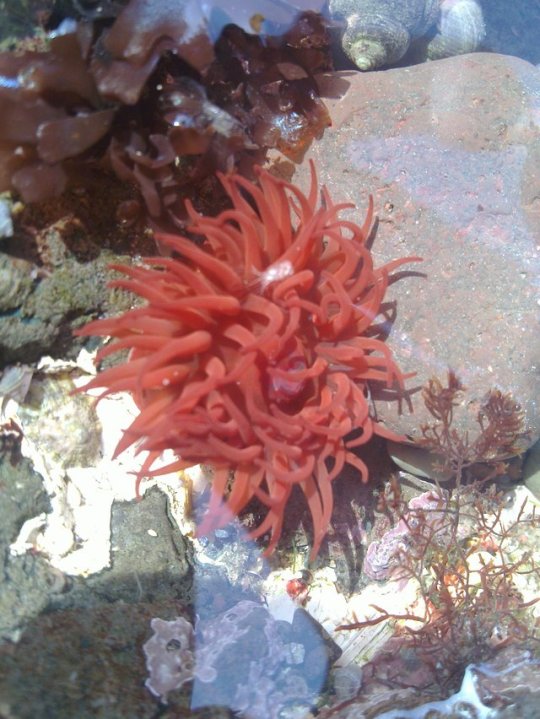
Beadlet Anemone (Actinia equina)
17 notes
·
View notes
Photo
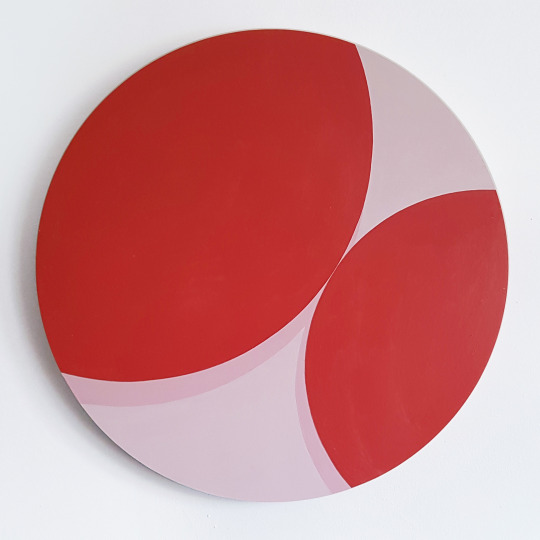
Charlie Oscar Patterson - Actinia Equina
14 notes
·
View notes
Text
Explorer
A little young Gordon fic for @gumnut-logic sensory sunday challenge. I got the idea for this little bit of fluff (with a little whump at the end) and decided to try get it down in one night. Hopefully I’ve got most the errors out. This is based on things me and m friends found on the Devonshire coast last year.
******
The barnacled rock was rough against his feet, but it didn't bother Gordon. With his bucket full of water, he carefully clambered over the rocks, looking for a good pool. A holiday in England, visiting the seaside holiday home of a family friend, had become quite the adventure for the five-year old. The water was cold, even with the sun shining down it seemed to freeze his body. The sun was warm on his skin and it was cooler than the summers he was used to. His brothers complained but Gordon saw the opportunity. A new country meant a new beach. The different temperature meant new and different sea life to find! The beach may be sandy, but it was enclosed by dark ragged rock which he just knew would contain rock pools. Last night Gordon had gone into the library to pester John and had found a set of old coastal handbooks in the shelves. The one on rock pools was now sticking out his back pocket, ready to be opened. His fingers slipped into the crevice of the craggy rock and he pulled himself up. As he clambered over the top, before him was his prize.
Gordon lent in close to the rock as he edged over to an outcrop that would make a good seat. He had to use both hands and his bucket splashed against his arm leaving a red mark where it banged against his skin. He settled himself on the rock and gave his arm a quick check. It didn't hurt when he poked the mark, so he turned his attention to the still pool of water. Gordon wasn't known for being patient or sitting still, but Dad had shown him how moving scared the creatures. It was hard, especially as his bottom slowly became numb against the rock, but Gordon sat and observed. His eyes scouting the water for any movement. Suddenly, movement near some seaweed caught his eye. Small fish darted across the pool and a smile crossed Gordon’s face. His hand reached for the book as he took in as much detail as he could about the little fish before they disappeared. Small, some shiny scales along their sides. He flipped through the small book to the chapter on fish. Gordon had picked it for the pictures, and he flicked through, scrutinising each picture until he came to the one of a fish with blue-green scales dotted in a line along its side. Gordon still wasn’t great at reading, but he knew it was what he had just seen. Slipping the pen from his front pocket he put a tick next to the name.
Placing the book and pen on the side, Gordon reached down and waved his hand through the seaweed. The bright green seaweed floated in the cool water and felt like hair in his hand. The little fish darted out from their hiding place. Gordon started chasing them about tying to catch one, but they were just too quick. He wouldn’t be able to show one of those to his brothers. All the splashing had rocked the seaweed exposing a small orangey starfish. Gordon dried his hands on his shorts and grabbed his book, matched the picture, and ticked it. He would have put it in his bucket, but it was too small. He’d need a bigger one to impress his brothers. He quickly flipped to the seaweed section and ticked off the two types in the pool. A quick flick through and he found the page with the barnacles on it and the one with the limpets on. These were scattered all over the rocks and thus boring.
Having exhausted that pool, Gordon slipped the book and pen back into his pocket and climbed deeper into the rocks. There were loads of small pools, which held the odd bit of seaweed and nothing else. After climbing another jagged rock Gordon paused to look at his hands. His palms were sore and some of the skin had been roughened up by the barnacles. Gordon turned towards the way he had come. He could barely see over the rocks and he certainly couldn’t see the beach, but the idea of turning back without something cool made Gordon continue. He clambered over another rock, only to see a red bodges in a nearby pool. He headed straight to the pool and he crouched over it, getting a good look at the anemones. He’d seen them at the aquarium, and they had looked so squishy. Gordon reached in and stuck his finger into the extended red tentacles. The tentacles retracted but they had felt sticky to the touch. He did the same to the other one in the pool, chuckling slightly as it retreated. He ticked them off before heading toward the rocks closer to the sea. There were more red anemones as he got closer, however just as he was about to start climbing, he noticed a big dark red bulb just above the water. Moving closer, he noted the small yellow spots coating it. He reached out and poked it. It was slimy but soft, and very squishy. He rubbed his finger on it a bit more before stepping back and locating it in his book. The name he ticked contained the word ‘strawberry’. He was going to have to get someone to read the description to him later. Gordon continued to explore the rocks. He found a small crab, some more of the spotty anemones, some of them open with their tentacles flailing. Gordon was climbing over yet another rock, where there was a larger rock pool on the other side. What caught his eye was the bright green tentacles with purple tips in the water directly below. It looked like an alien. There was a thin ledge just above the pool, which Gordon tried to reach with his foot.
“Gordon Cooper Tracy!”
Startled by the sound, Gordon turned to see his mother standing on a rock with her hands on her hips. At the same time, Gordon’s foot slipped, and he fell towards the pool. His foot and leg brushed against the tentacles while his other knee scraped against the rough barnacles.
“Gordon!”
His mother’s voice had lost its stern tone and was now full of concern. Gordon managed to hang on with one hand and pulled his leg out of the water. He got his foot on the ledge, the rock digging into the damp sole. But the feeling was nothing compared to pain that was radiating from where the alien tentacles had touched his skin. Tears were already forming in his eyes. The first one slid down his face and plopped into the water below. A firm hand on his arm made him look up into his mother’s brown eyes. She pulled him up and into her arms and he let the tears fall, burying his face into the soft fabric of her top.
“Shush. It’s okay Gordon.”
His mother rocked him slightly before carefully making her way back over the rocks. Gordon didn’t stop crying. Both his legs hurt. Soon they were back on the sand and his mother was placing him onto the blanket.
“Jeff, get the first aid kit. Gordon’s scraped his leg.”
Gordon couldn’t stop the tears as the soft antiseptic wipe stung his knee as him mother cleaned the wound. Between blinks he could see where the barnacles had broken his skin. He sobbed as band aids were placed over the bleeding areas. Once done, his mother took his other leg and turned it. There was a red rash that started just under his knee and finished at his foot. It really hurt. Gordon sniffed, trying to hold back the tears as his brothers gathered around him.
“How did you get this, Gordon?” His mother asked.
“The…the alien tentacles.”
His mother looked a confused and turned towards his dad, who just shrugged. It was John who stepped forward and grabbed the book from Gordon’s pocket and started thumbing through the pages. He stopped on one before turning it to Gordon.
“Is this what stung you?”
On the page was a picture of pale green tentacles with light purple tips. Gordon nodded, and John turned book back to himself and read it aloud.
“Snakelock Anemone, Anemonia viridis, found on the south and western shores of Britain. They have distinctive bright green tentacles with purple tips and fluoresce under UV light. The Snakelock tentacles sting leaving a painful and sometimes itchy rash that can last up to one month, so be careful not to touch them.”
John passed the book to their mother, who checked it over. His Dad sighed.
“This Gordon is why you don’t run off. Not only could you have been washed away if you had fallen in, you could have become trapped by the tide and the coast guard would have need to be called to come rescue you. You knew you shouldn’t have gone rock pooling alone, yet you did anyway. Let this be a lesson to you, son.”
Gordon nodded, though he could hear the worry in his father’s stern words. He had known he was going to get told off for running off. He had just hoped to have come back with something cool. His mother moved and scooped him up, as his brothers and father went back to their game of catch. His mother removed the pen that had been digging into him and wrapped her arms around him in a warm hug. She held open the book at the page of the snakelock and ticked it off for him.
“How about we see what else you found, hey?”
Her head was rested on his, a comforting pressure that helped Gordon fight the tears. His mother thumbed through the book, reading to him all the names and information about the things he’d found. She helped him pronounce the Latin names, and all this distracted him from the tingling pain in his leg. It turned out he’d found a lot of things, including beadlet anemones, Actinia equina, strawberry anemones, Actinia fragracea, and the little fish were 2-Spot Goby, Gobiusculus flavescens. Gordon still wished he’d found a big crab, but that could wait until another day when his legs didn’t hurt anymore.
#thunderbirds are go#sensorysunday#sensorysunday2020#Gordon Tracy#Lucille Tracy#touch#explore#fluff#a little hurt#seaside#beach#rock pooling
18 notes
·
View notes
Video
SOUND ON . Watching a Sea Anemone open and close as the tide laps it. The tide was headed out and I was lucky to catch a short video of this Anemone as it went from fully open, with tentacles out to closed in its domed form. . When open, you can see why they are called ‘Flowers of the Sea’. They aren’t plants, they are actually animals related to Jellyfish and Corals. I believe this is called the Beadlet anemone (Actinia equina). It’s very common in the UK. A lovely thing. . #anemone #seaanemone #Beadletanemone #Actiniaequina #sealife #coral #jellyfish #rockpool #lowtide #coast #crail #roomebaybeach #seaweed #sea #macroalgae #rock #water #northsea #video #vidooftheday #iplantsman #wildlife #naturalworld #flowers (at Crail Roomebay Beach) https://www.instagram.com/p/CD9oGZRgrYG/?igshid=1kb9ucsle652l
#anemone#seaanemone#beadletanemone#actiniaequina#sealife#coral#jellyfish#rockpool#lowtide#coast#crail#roomebaybeach#seaweed#sea#macroalgae#rock#water#northsea#video#vidooftheday#iplantsman#wildlife#naturalworld#flowers
1 note
·
View note
Text
Figuring out structure
Proteins are like molecular machines. Unlike actual machines, proteins can fold into intricate 3-D structures on their own. Wouldn't it be convenient if your bookshelf from IKEA could do that? If we want to understand how proteins work, we need a blueprint. Some parts of the protein are essential for stability; other parts are crucial for getting things done through binding or catalysis. We need to understand how different parts of the protein fit together; this is where Structural Biology comes in. Getting the 3-D structure is one of the main steps in characterising new anemone toxins. I will cover some of the techniques we use to investigate the toxin structure.
The hierarchy of protein structure goes like this: primary structure-->secondary structure-->tertiary structure-->quaternary structure. For anemone toxins, we don't have to worry about the quaternary structure. Usually, anemone toxins have one polypeptide, not multiple polypeptides.
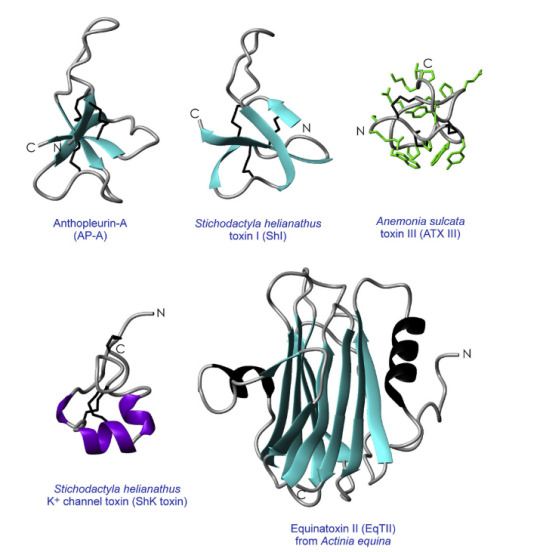
Figure 1. Structures of anemone toxins (Source: Norton, R. S, 2009)
Primary structure:
It's the amino acid sequence or 'code' for the protein. You can get the amino acid sequence from DNA, mRNA or protein sequencing. Protein sequencing just gives you the sequence for your protein. However, if we use DNA or mRNA sequencing, then we have to figure out the 'mature' peptide sequence. DNA and mRNA code for the 'first draft' of the peptide. After translating mRNA to protein, the signal peptide and pro-peptide are attached to the 'mature peptide.' Those two parts of the protein get cut out before our mature peptide can go out in the world and decimate prey.
Secondary structure:
Our flat polypeptide chain will fold into different secondary structures like alpha-helices, beta-sheets, beta turns, etc. Circular dichroism and Fourier transform infrared radiation (FT-IR) can tell us about the secondary structure of the toxin. CD and FT-IR are commonly used to predict the amount of each secondary structure in proteins. For CD, we measure how much of circularly polarised light in the far-UV region is absorbed by the sample. We use curve fitting programs to determine which combination of secondary structures fits the spectra the best (e.g. 50% beta-sheet, 10% alpha-helix, 20 % random coil and 20 % beta-turn). FT-IR works similarly, but we use infrared radiation instead of polarised light. FT-IR is a better option for investigating the interactions between pore-forming toxins and lipid membranes. The lipid vesicle or 'sacs' scatter polarised light, which it makes challenging to use CD for the same purpose.
One of the best things about spectroscopic techniques is that they are not as time-consuming as, X-ray crystallography. You can have multiple CD, and FT-IR runs in 1-2 hours and get the processed data before lunch. However, CD and FT-IR are low-resolution techniques. They don't tell you the exact position and orientation of tryptophan 32. We need atomic resolution structures to get an in-depth understanding of how anemone toxins work.
Tertiary structure:
The full 3-D structure of proteins will have secondary structure plus the disulphide linkages, salt bridges, hydrophobic interactions. There are two main ways of getting atomic resolution structures: X-ray crystallography and NMR. X-ray crystallography can give high-resolution 3-D structures—if you manage to please the crystal gods. If you don't have the ideal crystallisation conditions—no crystal for you. I know PhD students who spent 12-18 months on crystallising their protein. However, once you get past the crystallisation bottleneck, the diffraction experiments and data processing doesn't take as much time. In theory, you can get better resolution with X-ray crystallography than NMR. Let's assume you don't have time for crystallisation and you go with NMR. NMR is excellent for finding the structure of smaller proteins, but for larger proteins, you have to use isotopic labelling. Some proteins that are too big for NMR. In X-ray crystallography, the protein is a 'frozen' state. However, NMR also lets you study proteins in solution to understand the dynamics of the protein. You can observe how the protein changes when it binds to something.
We can also predict the 3-D structure of the toxin-based on the sequence alone.
How?
Computer magic !
With the protein data bank and structure prediction tools like SWISS-MODEL, you can predict the 3-D structure of a new toxin. If there is an anemone toxin in the database with an experimentally determined 3-D structure and it has high sequence similarity with your new toxin, you can use homolog modelling. If you can't use homology modelling, you can use de novo structure prediction like I-TASSER. In de novo modelling, the program predicts the structure for smaller sections of the protein and uses those bits to build the full predicted model. Model prediction isn't 100% accurate, and we still have to determine the 3-D structure experimentally. However, predicted 3-D structures act as a guide.
Every technique has its strengths and weaknesses. A good researcher tries to use the most suitable method for their project to its full potential. You have to realise the power that's inside.
So, what can you do once you have the 3-D structure of a toxin?
I am going to use APETx1 from the clonal anemone as an example. APETx1 is a potassium channel toxin, which targets the Ether-a-gogo channels in heart cells. Since APETx1 is a small potassium channel toxin, Chagot and company could use NMR. They found that APETx1 belong to the Defensin family. A variety of anti-bacterial proteins and ion channel toxins belong to this family. Proteins with Defensin-4 domain, have double or triple-stranded antiparallel b-sheets linked to a short a-helix by two disulphide bridges. Since NMR can reveal disulphide linkages, Chagot found APETx1 has an inhibitor cysteine knot (ICK). The inhibitor cysteine is a very popular protein fold because it's so stable that it makes proteins resilient against heat stress and proteolysis. Getting the structure of a toxin allows us to classify the toxin and compare it with structurally similar toxins. Since APETx1 has structurally similarity with two other toxins BeKm1 and CnErg1, you can infer it would have a similar mechanism for blocking potassium channels. Chagot suggested that five key amino acids on APETx1 (i.e. Tyr 5, Tyr 32, Phe33, Lys8 and Lys 18) 'block' the Ether-a-gogo channels through electrostatic interactions.
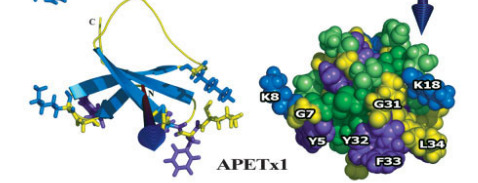
Figure 2. 3-D structure for APETx1 (Source: Chagot et al, 2005)
In short, we can use a variety of biophysical techniques to get structural information for new toxins and the structure provides insight into the function. Protein structure and function are different sides of the same coin. Next time, I will flip the coin by covering how we figure out function.
Citations:
Chagot, B., Diochot, S., Pimentel, C., Lazdunski, M. & Darbon, H. Solution structure of APETx1 from the sea anemone Anthopleura elegantissima: A new fold for an HERG toxin. Proteins Struct. Funct. Genet. 59, 380–386 (2005).
Jouiaei, M. et al. Ancient venom systems: A review on cnidaria toxins. Toxins (Basel). 7, 2251–2271 (2015).
Norton, R. S. Structures of sea anemone toxins. Toxicon 54, 1075–1088 (2009).
Norton, R. S. & Pallaghy, P. K. The cystine knot structure of ion channel toxins and related polypeptides. Toxicon 36, 1573–1583 (1998).
Dauplais, M. et al. On the Convergent Evolution of Animal Toxins. J. Biol. Chem. 272, 4302–4309 (1997).
Belmonte, G. et al. Primary and secondary structure of a pore-forming toxin from the sea anemone, Actinia equina L., and its association with lipid vesicles. BBA - Biomembr. 1192, 197–204 (1994).
Honma, T. & Shiomi, K. Review Article Peptide Toxins in Sea Anemones: Structural and Functional Aspects. Mar. Biotechnol. 8, 1–10 (2006).
Bernard Gilquin, Judith Racape, Anja Wrisch, Violeta Visan, Alain Lecoq, Stephan Grissmer, Andre´Menez, and S. G. Structure of the BgK-Kv1.1 Complex based on distance restraints identified by double mutant cycles: Molecular basis for convergent evolution of Kv1 channel blockers. J. Biol. Chem. 277, 37406–37413 (2002).
3 notes
·
View notes
Photo

Pomodoro di mare by mauriziocucchiara Actinia equina comunemente chiamata pomodoro di mare, vive anche nelle nostre zone "riviera del Conero An" a pochi metri di profondità È un'anemone di mare di piccole dimensioni “massimo dieci centimetri di diametro”, di colore rosso vivo. È munita di tentacoli urticanti, a volte di colorazione più chiara, il corpo è cilindrico ed ha alla base un disco pedale più ampio del tronco sovrastante. L’'apertura boccale è circondata da circa 200 tentacoli abbastanza corti. Durante la bassa marea spesso rimane al di fuori dell'acqua, assumendo l'aspetto di una piccola pallina Quando è completamente immersa estroflette i suoi tentacoli e assume una forma simile a quella di un fiore, questa condizione è più facilmente osservabile in notturna. Una curiosità “è carnivoro”
14 notes
·
View notes
Photo

Beadlet Anemone (Actinia equina).
Robin Hood’s Bay, North Yorkshire.
September 2015.
1 note
·
View note
Photo

"Come to the window, sweet is the night-air! Only, from the long line of spray Where the sea meets the moon-blanched land, Listen! you hear the grating roar Of pebbles which the waves draw back, and fling, At their return, up the high strand, Begin, and cease, and then again begin, With tremulous cadence slow, and bring The eternal note of sadness in." Beadlet Anemone, European Sea Anemone, Red Sea Anemone, Horse Anemone (Actinia equina). #sea #anemone #beach #cyprus #actinia #explore #experiment #experience https://www.instagram.com/p/CAQhMC2D5Iu/?igshid=175kz0zv1lzsi
0 notes
Photo

The beadlet anemone, Actinia equina, is a common sea anemone found on rocky shores around all coasts of the United Kingdom and Ireland. The British miscellany, or, Coloured figures of new, rare, or little known animal subjects. 1806. Cropped image.
262 notes
·
View notes
Text
Censo costero Shoresearch en Walton-on-the-Naze (2019)

(Read in English)
El miércoles 13 de Marzo fue el comienzo de los Shoresearch surveys (censos costeros) en Essex. Es un proyecto voluntario a nivel nacional que intenta adquirir una mejor imagen de las especies a lo largo de la costa, en este caso, la costa de Essex (artículo online sobre el censo de 2018).
Como ya escribí en entradas anteriores (Paseo Geológico en The Naze 1) (Paseo Geológico en The Naze 2) (Paseo Geológico en The Naze 3), la costa en Walton-on-the-Naze está compuesta de arcilla de Londres. Cuando la marea está baja, la mayor parte de la playa al descubierto es esta arcilla de Londres, un sedimento mucho más consistente que la arena pero no sólido o compacto como rocas.
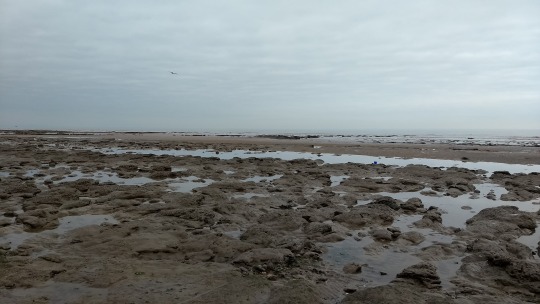
La primera parte del censo consistía en un muestreo caminado en transectos paralelos a la costa por unos 30 minutos. La segunda parte consistía en un muestreo de cuadrantes. En ambos casos, presencia de especies y número (en el caso de animales) o covertura (en el caso de algas) fueron registrados.


Muestreo en cuadrantes (créditos de la primera foto: Essex Wildlife Trust)
Entre las especies de algas, se encontraba el sargazo japonés (Sargassum muticum), una especie invasora que fue registrada por primera vez en la isla de Wight (1971). La especie es originaria de aguas japonesas y chinas y llegó de manera no intencionada con la introducción de ostras comerciales desde la Columbia Británica y Japón. Su rápido ratio de crecimiento y alta fecundidad es la principal razón de su éxito como especie, ya que crece mucho más rapido que las especies nativas y compite por la luz solar. (Read more at JNCC).

Otras especies de algas fueron el alga serrada (Fucus serratus), Fucus spiralis and sargazo vejigoso (Fucus vesiculosus).
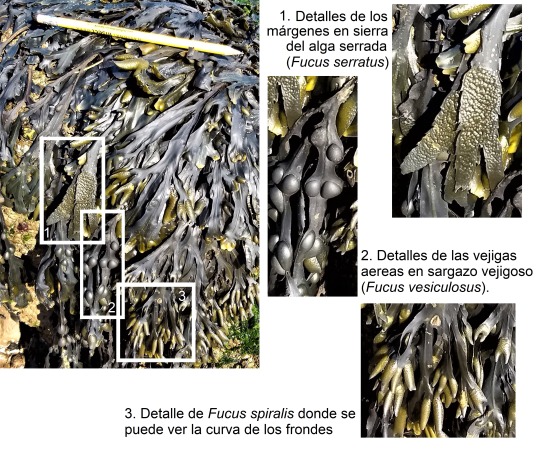
Además de Fucus sp. se registraron otras algas como alga marina (Zostera marina), laver (Prphyra umbillicalis), Osmundea pinnatifida, y las lechugas de mar Ulva lactuca y Ulva intestinalis.

Lechuga marina (Ulva lactuca)
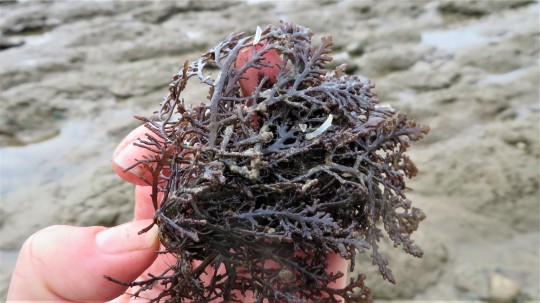
Osmundea pinnatifida (crédito de la foto: Essex Wildlife Trust)

Otra especie de lechuga marina (Ulva intestinalis)

Laver (Prophya umbillicalis)
Entre los animales encontrados los más comunes fueron los moluscos como barnea blanca (Barnea candida), lapa común (Patella vulgata), lapa zapatilla (Crepidula fornicata) y bocina (Buccinum undatum).

La lapa zapatilla es otra especie invasora. Tiene un aspecto oval y forma cadenas curvas de hasta 12 individuos con el de más tamaño situado en la base.

La barnea blanca y su comportamiento de enterramiento.
Se registró también cangrejo común (Carcinus maenas), rosa de coral (Flustra foliacea), y cascarones de huevos del molusco bocina y de raya.

La rosa de coral es un briozoo, una colonia de animales individuales conocidos como zooides. Cuando se seca y llega a la costa, lo que se ve es realmente el esqueleto calcificado que construyen.

Cáscaras de huevo de bocina
Finalmente, se encontraron dos anémonas, un tomate de mar (Actinia equina) y una Sargatia, una situada en una de las estructura de emplazamiento de armamento, y la otra bajo una roca suelta.

(Siguiente censo)
0 notes
